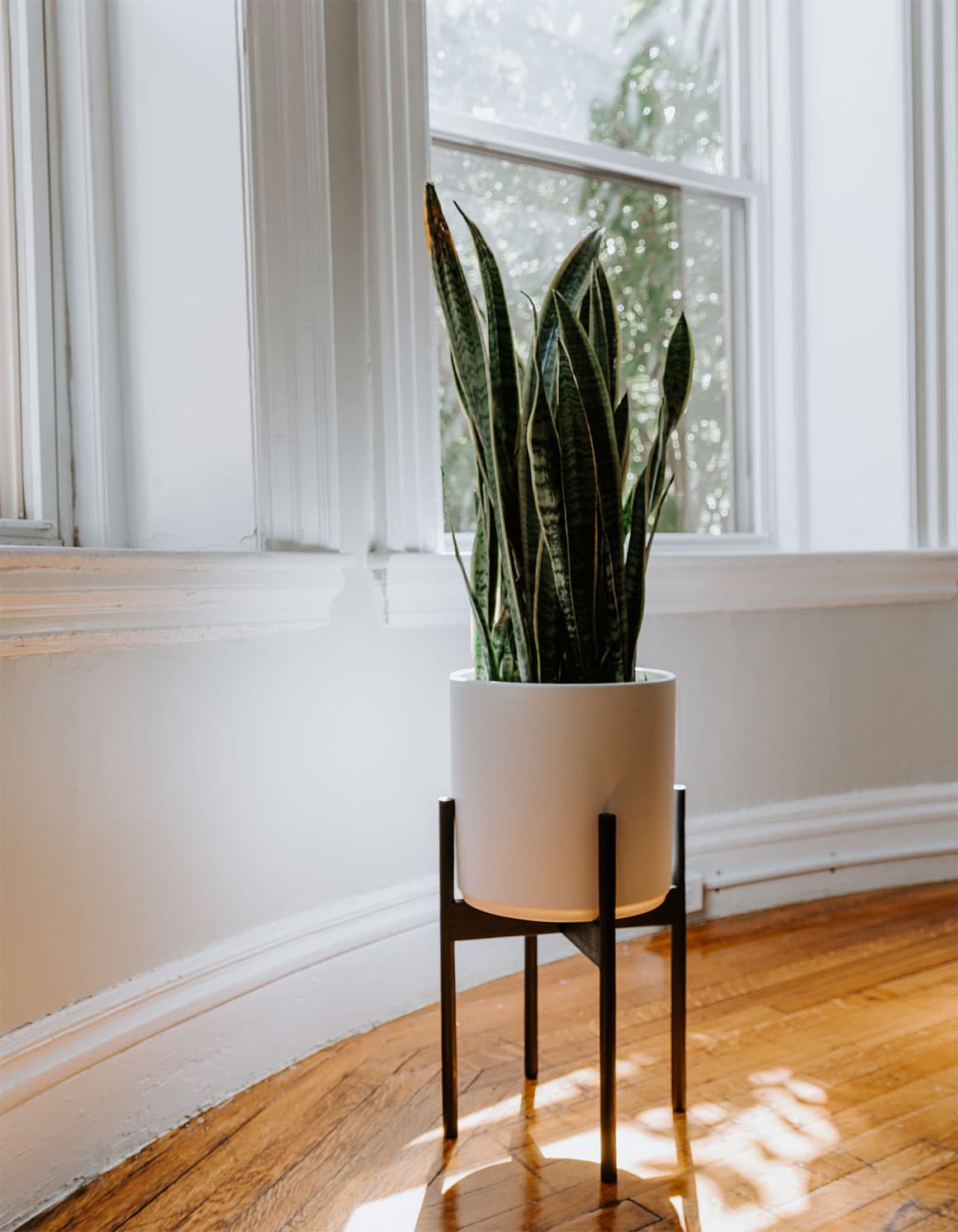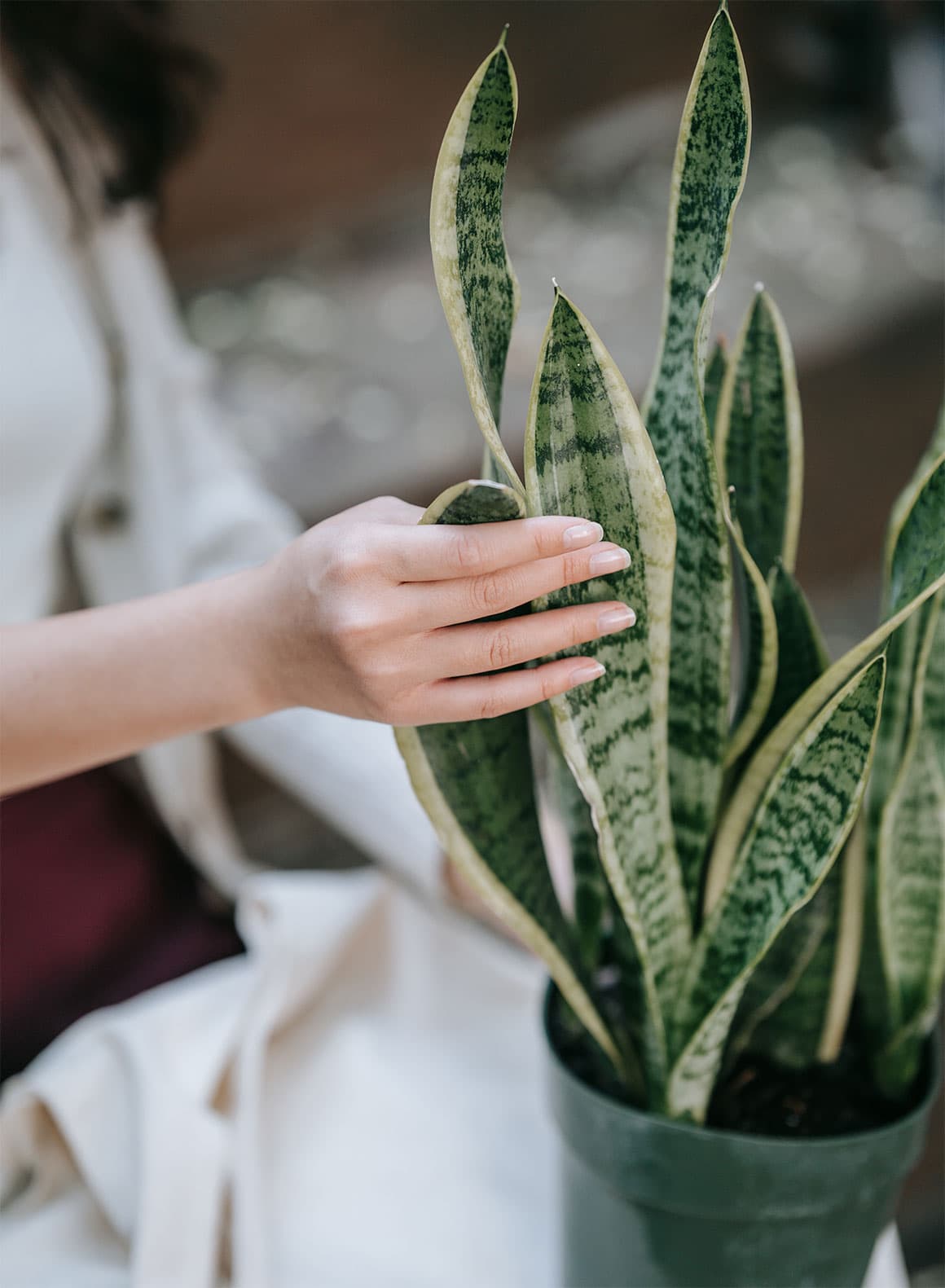Snake plants, scientifically known as Sansevieria, have become incredibly popular among plant enthusiasts for their striking appearance and easy-care nature. With their long, sword-like leaves and unique patterns, they add a touch of elegance to any indoor space. Not only are they visually appealing, but they also offer a range of benefits, such as air purification and low maintenance requirements. Our experts will explore the essential aspects of caring for a Snake Plant and help you ensure its well-being.
How To Care For A Snake Plant

Lighting & Placement
Snake plants are known for their adaptability to different light conditions. They can tolerate low light levels but will thrive in bright, indirect light. Place them near a window with filtered sunlight, or in a room with moderate lighting. Avoid exposing them to direct sunlight for prolonged periods, as it can scorch the leaves.
Watering
One of the reasons why Snake Plants are so popular is their ability to withstand drought. They have thick, fleshy leaves that store water, allowing them to survive in dry conditions. When it comes to watering, it’s crucial to strike the right balance. Allow the soil to dry out between waterings, and then thoroughly water the plant, letting excess water drain away. Overwatering can lead to root rot, so it’s better to underwater than to overwater a Snake Plant.
Soil and Potting
Snake plants prefer well-draining soil to prevent waterlogged roots. A good potting mix for Snake Plants consists of a combination of regular potting soil, sand, and perlite. This mixture ensures proper drainage while providing essential nutrients. Choose a pot with drainage holes to prevent water from accumulating at the bottom.
Temperature and Humidity
Snake plants are adaptable to a wide range of temperatures. They prefer temperatures between 60-85°F (15-29°C), making them suitable for most indoor environments. They can tolerate lower temperatures but are sensitive to frost. As for humidity, they can handle both low and high humidity levels, making them ideal for different climates.
Fertilization
Snake plants are relatively low-maintenance when it comes to fertilization. During the growing season (spring and summer), you can feed them with a balanced, water-soluble fertilizer diluted to half the recommended strength. Apply the fertilizer every two to four weeks. During the dormant season, reduce or stop fertilization.

Pruning and Maintenance
Snake plants are generally slow growers, requiring minimal pruning. However, it’s essential to remove any yellow or damaged leaves to maintain the plant’s health and appearance. Wiping the leaves with a damp cloth occasionally helps keep them clean and dust-free.
Propagation
Snake plants are incredibly easy to propagate. One common method is by dividing the rhizomes or offsets. Carefully remove the young shoots that emerge from the base of the plant and plant them in separate pots. Another method is leaf cuttings, where you can cut a healthy leaf into sections and plant them in moist soil or water until they develop roots.
Caring For Snake Plants Conclusion
By following these care tips, you can enjoy the beauty and benefits of a thriving Snake Plant. Its one of our firm favourites here at Lupo Boutique and always brings a smile to the room.
Remember to observe your plant closely, as each Snake Plant may have specific preferences and requirements.
With a little love and attention, your Snake Plant will reward you with its striking foliage and resilience, making it a perfect companion for any plant enthusiast.
